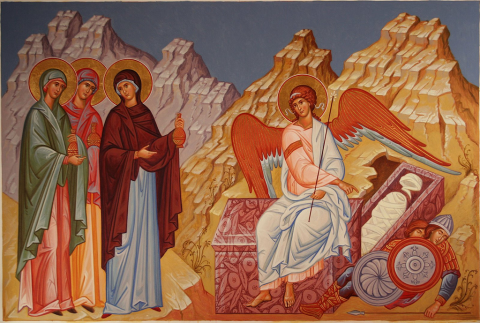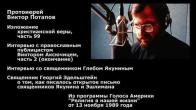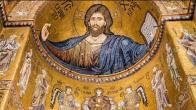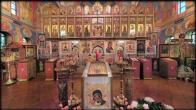You are here
FAITH

7 th Resurrection Gospel
(John 20:1-10)
The first day of the week cometh Mary Magdalene early, when it was yet dark, unto the sepulchre, and seeth the stone taken away from the sepulchre. Then she runneth, and cometh to Simon Peter, and to the other disciple, whom Jesus loved, and saith unto them, They have taken away the LORD out of the sepulchre, and we know not where they have laid him. Peter therefore went forth, and that other disciple, and came to the sepulchre. So they ran both together: and the other disciple did outrun Peter, and came first to the sepulchre. And he stooping down, and looking in, saw the linen clothes lying; yet went he not in. Then cometh Simon Peter following him, and went into the sepulchre, and seeth the linen clothes lie, And the napkin, that was about his head, not lying with the linen clothes, but wrapped together in a place by itself. Then went in also that other disciple, which came first to the sepulchre, and he saw, and believed. For as yet they knew not the scripture, that he must rise again from the dead. Then the disciples went away again unto their own home.
While the Myrrh-bearers already believe in the Resurrection, the disciples refuse to believe when they hear and see those who had been eyewitnesses to it. Apostolic disbelief is an absence of gullibility. On hearing Mary Magdalene’s account, it would have been easy to quickly accept that the Lord had been taken away somewhere and that where He had been laid was unknown; it would have been enough to simply look into the empty tomb and at the burial cloths that lay therein. However, it was not so easy to believe in the Resurrection. Easy readiness to believe could amount to gullibility, something that had no place where the subject was the salvation of the entire world.
Among our contemporaries, there are many who honestly doubt the fundamental truths of our Faith, i.e., people who doubt not out of thoughtless flippancy, but out of a profound conviction that if the truths of our Faith are in fact true, their entire lives should follow a path different from what they have pursued to date, for the mystery of eternal life have been revealed to them. Of course, such doubters are closer to God than many “believers,” who believe in all of the Christian truths without debate or question, but whose faith is not reflected in any way in their lives. After all, one can be gullible not only with respect to various foolish rumors, but also with respect to holy truths. One is not gullible who, himself, by way of personal religious experience, even if through the most profound doubt, has come to recognize faith that is not merely proclaimed, but that is compelling, a faith of joy and life. Such a person will ever be firm [in his faith], will not abandon his convictions, and in his life will not consciously trample them with sins. One who is gullible, one who is able to immediately accept the Faith, is also quick to abandon it. He may seem not to harbor doubts about anything, but that is only because he does not know or think about anything.
The Myrrh-bearers are first to announce the Good News about the Resurrected One not because the Apostles are weak, but because of [the Myrrh-bearers’] inner strength, and because of the importance of the event itself. The Apostles need to be prepared. As it happens when some people especially love someone who has died, they are not immediately told of his death, but rather are prepared to receive the news; so God’s Providence prepared them to encounter, not the Deceased, but – what is incomparable – with the Resurrected Lord. Despair over death could not immediately be replaced by immeasurable joy in the Resurrection. It would be impossible to endure such a change. And the Lord, saving the disciples from the need to experience such a shift, summons the Myrrh-bearers and lays upon their womanly, more direct nature, the burden of the world’s first encounter with God glorified on earth. All of the apparitions of the Lord to women were meant to prepare the Apostles. Besides the Evangelical – psychological – meaning, which is revealed internally, here the Gospel relates that the Risen Lord directly, and through his Angels, gives the Myrrh-bearers but one command: to go to the Apostles and tell them of what has transpired. (In Matthew, first the Angels, and then the Lord Himself, order the Myrrh-bearers to go to the Apostles. In Mark, the Angels tell the Myrrh-bearers to go to the Apostles. In Luke they themselves immediately go to the Apostles. In John, the Lord Himself orders Mary to go to the Apostles.)
To come to belief in Christ’s Resurrection in the way the Apostles did is a great matter which becomes the origin of the Faith for the entire world. Thus, is it any wonder that the Lord takes so much care, and even openly expresses such love for His Disciples? How the Lord softens the power of His awesome Resurrection! – “Go, tell them what had to be has taken place,” “go tell them to go to Galilee,” “Go tell them that I am alive...” And the Apostles are surrounded by, filled with, and cuddled in the news of the Resurrection. It is only after they have been filled with expectation of awesome revelations, that the Lord Himself comes to them, already not to reveal Himself to them, but to have a talk that cannot be put off, regarding the salvation of the world.
Archbishop John (Shakhovskoy)
Relics in cathedral - monthly calendar
| S | M | T | W | T | F | S |
|---|---|---|---|---|---|---|
|
|
|
|
|
|
1
|
2
|
|
3
|
4
|
5
|
6
|
7
|
8
|
9
|
|
10
|
11
|
12
|
13
|
14
|
15
|
16
|
|
17
|
18
|
19
|
20
|
21
|
22
|
23
|
|
24
|
25
|
26
|
27
|
28
|
29
|
30
|
PARISH LIFE
Address of our Cathedral
While all the materials on this site are copyrighted, you may use them freely as long as you treat them
with respect and provide attribution on the Russian Orthodox Cathedral of St.John the Baptist of Washington DC.









